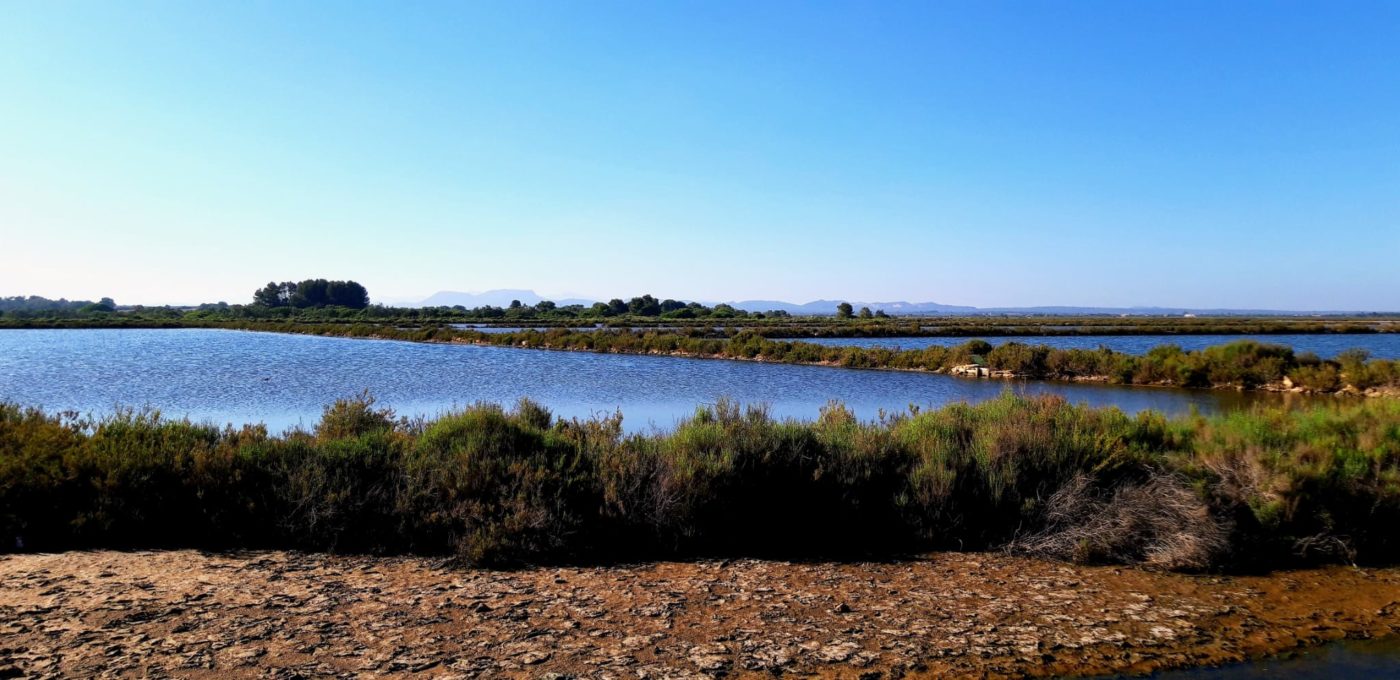It’s well worth a visit to this pearly blue sandy beach, surrounded by a natural park of dunes, salt marshes and poetic bunkers. If you were told you were in a Roald Dahl Caribbean story you’d believe it; but this is not Jamaica, it’s one of the finest examples of Mediterranean sand and one of the most beautiful salt marshes you’ll ever see.
In the southeast of Mallorca, next to Ses Covetes and Campos, is this protected Balearic treasure that covers 3,788 hectares, 60% of which belong to the sea. Between Sa Rapita and Colonia de Sant Jordi are the white beaches: Sa Rapita, Tem, Es Trenc, Pedregons and Marqués beach. It has several islets: Na Llarga, Gros, Sa Llora and Gavina. It is considered a Natural Area of Special Interest thanks to the citizens’ platform “Salvem Es Trenc” and an Area of Special Interest for Birds by Seo-birdlife. Since 2017 it has been a maritime-terrestrial Natural Park.
For centuries and thanks to the salt mining activity, this peculiar ecosystem was created, which is highly valued by multitude of birds on their migratory routes for its important contribution to their diet of small organisms. It is a pleasure to see all kinds of birds feeding on this ground that looks like neatly arranged mirrors. During the winter you will find flamingos. Stonecroppers, archibebes, ospreys… in the eBirds page you have all the list of birds and when to see them.

The area has an impressive biodiversity adapted to the salinity of its waters and the winter winds. The beaches take their whiteness from the remains of marine skeletons and you can see dunes with barron, sea lilies and tamarisks… as well as Balearic endemisms such as the gatell or the limonium. There are also small pine and juniper forests. In the sea, underwater, meadows of the centenary Posidonia.
There is a salt mine, Salinas de EsTrenc, which can be visited, and a 15th century church, Sant Joan de la Fonsanta, next to a spa of the same name, where there was also a Francoist concentration camp. Further around the perimeter there are fields of crops and some cattle farms: yes, there are cows in Mallorca! Machine gun nests were built on the beach in 1939 for the Second World War, but they were never used. In 2014 the art collective Boa Mistura decorated these bunkers with verses from the poem “Cala Gentil” by Miquel Costa i Llobera.
What does Es Trenc mean?
The name Es Trenc comes from breakage: the water from the plains of Campos goes to the area of the salt flats and there it stays, forming the dunes that separate it from the Mediterranean. At some point this water breaks the dune and creates the channel that gives way to the salt water. This break is Es Trenc.



